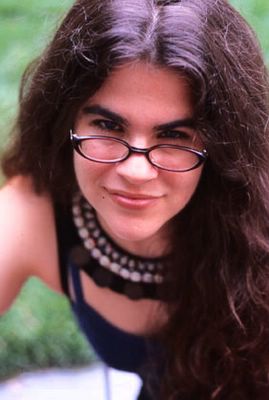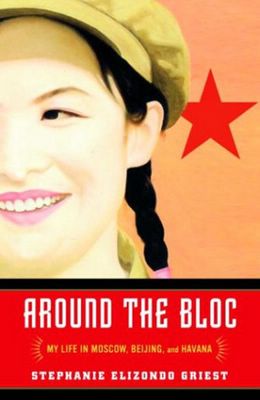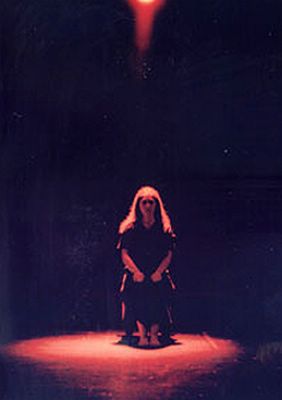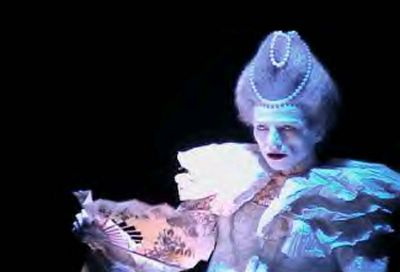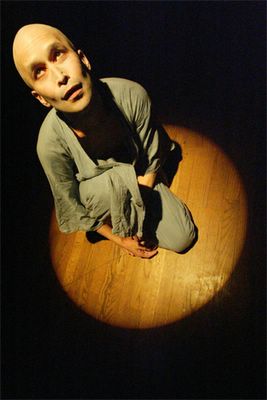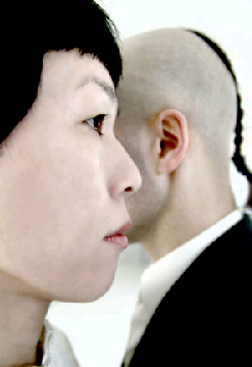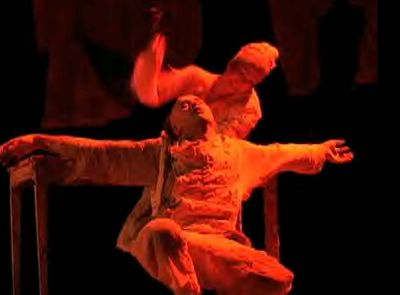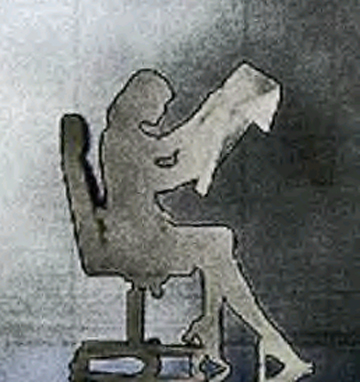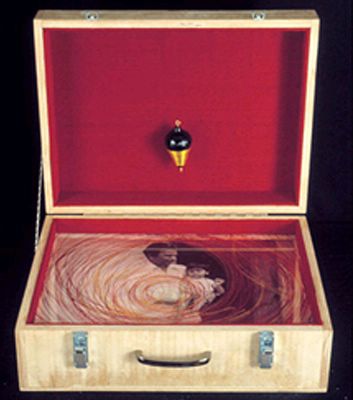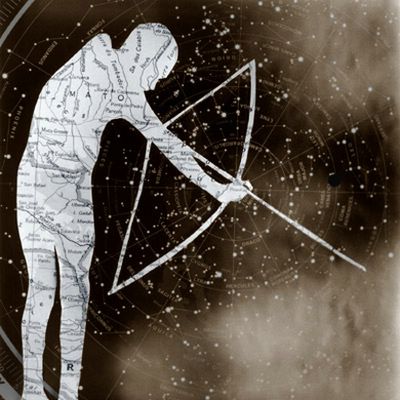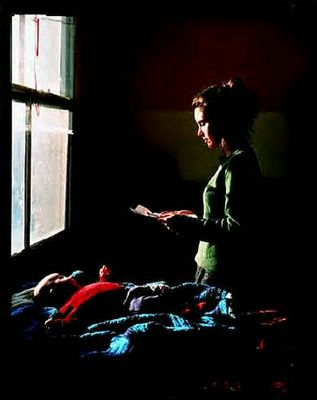 MUSIC/Disc SeriesMagdalen Hsu-Li, “Smashing the Ceiling”
MUSIC/Disc SeriesMagdalen Hsu-Li, “Smashing the Ceiling”My upcoming album is called “Smashing the Ceiling.” When I was writing the songs on this album, I felt I was experiencing a kind of quantum leap or personal gestalt.
There were so many breakthroughs that happened to me personally, emotionally, musically and spiritually.
"Smashing the Ceiling" was an incredible album to make. The songs felt completely inspired as I was writing them, as if I were a just a channel and they were coming from some higher source.
When I wrote the songs, I was trying to break through many personal ceilings in myself, things that most people would not know about unless they were exceptionally close to me. Later, as the album progressed, I began to feel pretty smashed up, myself.
This album has been the hardest thing I have ever made. It has been a rough time for me. I admit I'm glad to be moving into the performing end of things again.
What helps me create: Dreaming, sleeping. A lot of my best ideas come when I am awakened at 5am. I like to think it’s a time I can truly tap into the collective unconscious.
Sometimes it takes half an hour to complete a new song, sometimes months or years; in general, I like to try to wrap things up on a song within about a day or two.
SONGWRITERS: BORN OR CREATED?
Well, my first song ever was a nine-stanza adaptation of my own lyrics, and a schoolmate’s lyrics to the tune "Old Susannah". It was about a turkey that got botulism.
"Oh dear turkey
Oh why'd you have to die
Oh why'd this sickness come to you
I think I'm gonna cry"
We got a standing ovation from the class. I think I was like nine years old.
So, maybe songwriters are born. But what you do with your artistic inclination is up to you.
REFLECTIONS OF REAL LIFE
Fiction is the work of artists. Real life is something a lot of artists are really bad at! So, they create lives of fiction. But I try to keep all my songs based in personal experience or personal feeling. Songs are better if they’re connected to something real.
Personal favorites: Probably “Redefinition” or “Mary Magdalene,” because I have changed myself so many times in my life, and certainly I have lived out the stigma of the virgin/whore, the bad girl -- what woman hasn't? Mary Magdalene is getting a makeover nowadays, thanks to the book "The Da Vinci Code".
SMASHING THE CEILING
It's hard to say [what’s different about this new album, compared to "Fire" and
"Evolution." It might be better if other people listen to it and decide that for themselves. I can say that the drummer is different for this album, and also that I think this is a much more inspired album than the last.
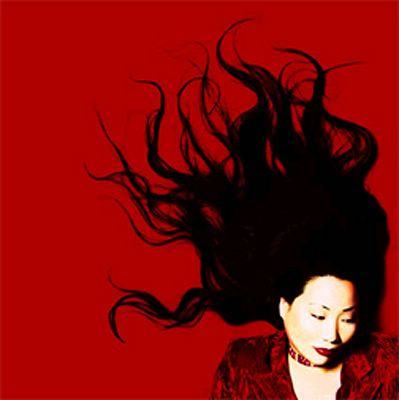 "I think [Mary Magdalene] is one of the most iconic, provocative, loved, hated, and mysterious women in history...I felt it was time to help redefine her story in a more positive light."Photo: Karen Moskowitz
"I think [Mary Magdalene] is one of the most iconic, provocative, loved, hated, and mysterious women in history...I felt it was time to help redefine her story in a more positive light."Photo: Karen MoskowitzThe songwriting is better; more universal and concise. The songs are shorter. I do think the politics are more deeply embedded; more hidden -- but still they are there to see, if you look deeper.
[Also], the personal takes precedence over the political in this album. I was writing where I was in my life, so it's an accurate portrayal, with hopes that the personal becomes universal.
PERFORMING ART: WHAT MATTERS TO ME
Depth and connection, giving to an audience of listeners, sometimes catharsis for myself. Writing songs is my way of giving to others.
Many performers are kind of broken people already; they would not have gotten into performing unless something was already lacking in themselves.
Maybe they are incapable of normal expressions of intimacy. Their art becomes their primary way of expressing intimacy of giving and receiving love, of being accepted by others.
Nothing gives me greater satisfaction than hearing someone say: "Your song meant so much to me because of _________," or "Your lyrics echoed my feelings, it really sounded like you were speaking for me and what I've been going through."
COMPASSION VS. COURAGE
I think they are equally important. We need more compassion in this world -- which, to me, equals understanding or putting yourself in someone else's shoes. We would have less wars if we had this.
On the other hand -- we need to be courageous, which, to me, equals righteous conviction. You must have an enormous amount of righteous conviction to be an artist, to be a human being, or how else can your ego take it?
It's pretty hard just being a human being, on an emotional level. We get all banged up and are expected to be perfect on top of that.
MUSIC, THE EXPERIENCE
Music just kicks ass over other art forms! The only other one that comes close is film, in regard to creating a large emotional connection to people.
I think that seeking a deeper connection to others is a theme that predominates in my music, also striving for spiritual or social consciousness. I also strive to create magic through my music.
I would like to think I write from all the different places I’ve lived: the Southeast, the Northeast, and the West Coast, that my music is a true amalgamation of country, folk, pop rock, jazz, even punk.
LIVING IN THE WORLD
Things that piss me off: People who are spiritually lazy; people who are hypocrites; people who think they are better than other people and go out of their way to make others feel bad just so they can feel better about themselves; egomaniacs, dishonest people who bend the rules and the truth so that they can serve themselves.
There is an incredible lack of integrity in most people, I find. Most of all, I really dislike people who project their own character flaws onto other people so that they don't have to look at themselves.
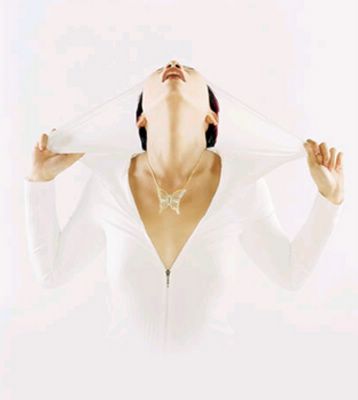 "I like the idea that music is a multi-dimensional medium. You can create soundscapes, much like a landscape in a painting..."Photo: Karen Moskowitz
"I like the idea that music is a multi-dimensional medium. You can create soundscapes, much like a landscape in a painting..."Photo: Karen MoskowitzWhat I’d like to see change in the world: That all people would really try to self-examine and look at their own behavior to discover what it is that makes them think and act the way they do. And practice self-restraint and diplomacy.
I really think that we would have no wars if people just could look at themselves objectively and say: “I need to work on myself and make myself a better person every single day and be relentless with myself in terms of my own growth.”
CREATING VS. PERFORMING
I think performing is more difficult for me, because I am actually a really very shy person. Most of my friends would scoff at this, but it’s true.
INSIDE TRACKS
“Mary Magdalene”She always looked a little
Deeper into things
She could find a heaven
In the hell that life can bring
Took a long walk down that
Lonely road to find herself again
Went a little crazy
From the places that she’d been
Well, I don’t know where she’s goin’
But I do know where she’s been...she’s
Comin’ on the scene
Just like Mary Magdalene
She had compassion
She was fearless and bold
A fallen angel
With a heart of gold
She had a faith
That no religion can give
A wisdom far beyond
The years that she’d lived
And I don’t know where she’s goin’
But I do know where she’s been...she’s
Comin’ on the scene
Just like Mary Magdalene
Several people have asked why I chose to write a song about one of the most controversial figures in biblical history.
“Mary Magdalene” is both an autobiographical song about my life, as well as a blend of various biblical mythologies about Mary Magdalene.
I think she is one of the most iconic, provocative, loved, hated, and mysterious women in history. Yet her story has been misinterpreted through the centuries, so I felt it was time to help redefine her story in a more positive light.
“Northern Light”I come from inside a mountain
A mountain made of stone
From a river full of blood
With the truth the world has known…
What would you say
If this world was at an end
What would you do
If these hurts we could not mend
Where would you go
At the end of it all?
I’d wanna be with you
In the northern light...
An early morning song. I woke up hearing the chords progression in my head and stumbled naked to the piano (freezing) and got the basic song form down on tape.
It came out very quickly, and I was inspired by the fact that the song has a dimensional space in it that is very large and vast, like looking out a huge expanse of mountain and sky.
I like the idea that music is a multi-dimensional medium. You can create soundscapes, much like a landscape in a painting, and people can feel or visualize what you are seeing in your own mind.
This song comes from many strange places, some personal and others ethereal. I could feel a vaguely Canadian type of energy around its creation, also the Iraqi desert and the center of the war activity played a role in this song, too.
Maybe the northern lights are actually a dimensional doorway and when we see the lights maybe we are actually seeing a glimpse of what is on the other side of that doorway. I’d like to console myself that if we continue down our warmongering path, maybe I will move to Canada. Or another dimension.
“Take Me There”There’s a place in greyspace
Where my soul was made
And when my time comes
May I be safely laid there
I was just playing around on my guitar not attempting to write anything, when the verse popped out and I really liked it...then the lyrics came out and after staring bewilderedly at them for a minute, I began to understand and remember what they were about.
I once had this amazing acupuncture treatment where when the needles were left in for a while, whereupon I went to a very strange grey space that I could see in my mind’s eye.
There was nothing there and there was everything there. I knew nothing and yet I knew everything; all the secrets and knowledge of understanding music were revealed to me and I knew that I carried them inside of me, that I had always carried them inside me.
I cried when I came out of the treatment and asked: “How did I forget?” My acupuncturist said: “You didn’t forget. You still have all that knowledge inside you. You just need to re-learn it again.”
Really, that's part of what this song is about. But it’s also about the awakening of passion in oneself, and going back to the place of your original nature; where you are just you, and where wholeness exists.
“Sweet Hereafter”I get through each day
But these scars will never fade
It’s been years since you left
This crazy world, my love
And all of my heavens have
Crumbled to dust
I saw the words “sweet hereafter,” rolled the words around on my tongue a few times and liked the way they sounded. I thought “there’s a song in those words.”
Then, a month or so later, I awoke at 5am to music in my head. I stumbled naked to the piano and, in the dark, recorded what I heard in my head.
As I wrote the song, I began imagining a morbid fantasy about what my life would be like if I lost someone I loved who was very dear to me.
I cried a great deal while writing the song; while tracking it in the studio, I cried a lot, too. Imagination can make you crazy. Or maybe you’re just feeling what others around you are feeling, and it just comes through you and you are just this vessel for it.
“Change The World”There’s no one else
Has all the magic that you have inside
Or knows the way
To share the gift that only you provide
If you wanna change the world
Then you gotta change yourself
And though you may feel
That everything you do is small
You can’t deny the ripple
That you send through it all
I first heard the melody and lyrics for the chorus of this song while I was driving in my car. Often, song ideas come to me when I am traveling or in a moving vehicle -- sometimes traveling helps your mind hitch a ride on to the universal highway.
I think that the song has a few meanings for me. One is that I have changed myself so many times in my life that I know it’s possible to do things like that. I’m not talking about little changes, but about big 360-degree turnarounds.
Also, I know what it is to feel very small and insignificant (which is most of the time), and then to run into someone I met like eight years ago who tells me they chose to walk down a particular path in their life because of a conversation we had, instead of taking another path.
QUICK HITS
Reads: Re-reading “Northanger Abbey” by Jane Austen
Downtime: Painting, hanging out with my friends, political and social activist work, running, walking, swimming, hangin’ with my honey.
The biggest myth about being a creative: That we live these incredibly romantic lives on the road, that the road is romantic. In truth, traveling in the U.S. can be an endless chain of hotels, stripmalls and Walmarts. The performances are fun, varied and exciting, but the traveling hardly varies from city to city in regards to what you see, visually.
If I wasn’t a singer/composer, I would definitely be: A trapeze artist!
Shown/header image: Magdalen Hsu-Li; Photo: Karen MoskowitzBio: Growing up in rural backwater Virginia, singer-songwriter and painter
Magdalen Hsu-Li began playing classical piano at age eight, and started writing music at an early age.
Says Hsu-Li, "You just couldn't stop the songs from coming. I was also painting, and at the time it seemed (to everyone) that was my stronger gift. But music was always the way for me to get in touch with the deepest parts of my emotional myself and confront my inner fears."
Early on, Hsu-Li focused intensely on painting, graduating with a degree in fine art from Rhode Island School of Design, and set her sights toward an art career in New York City.
Soon after graduating, she had a vivid dream that abruptly changed the direction of her life. "I dreamt I was a musician living in Seattle, and I felt utterly compelled to follow its message." She followed her instincts and moved to Seattle to study voice and classical and jazz piano at Cornish College of the Arts.
Hsu-Li writes songs that visually portray what she sees with her painter's eye, addressing universal themes about love, loss, and relationships; identity, spirituality, and the search for consciousness. "I write completely from the heart," she says. "But I also write from the places I'm from (the Southeast, Northeast, and West Coast), and from my heritage."
Hsu-Li has sold over 8,000 records through her own independent label and formed a dedicated grassroots following through constant touring.
Her previous release,
"Fire," was named one of the Best Top 12 DIY albums of 2002 by
"Performing Songwriter." Hsu-Li holds a BFA in Painting from Rhode Island School of Design and has been awarded the Oxbow Fellowship, Talbot Rantoul Scholarship and Florence Leif Scholarship for Excellence In Painting.
Read additional music content, in the FEB/MAR 2005 issue of "
Arte Six."
